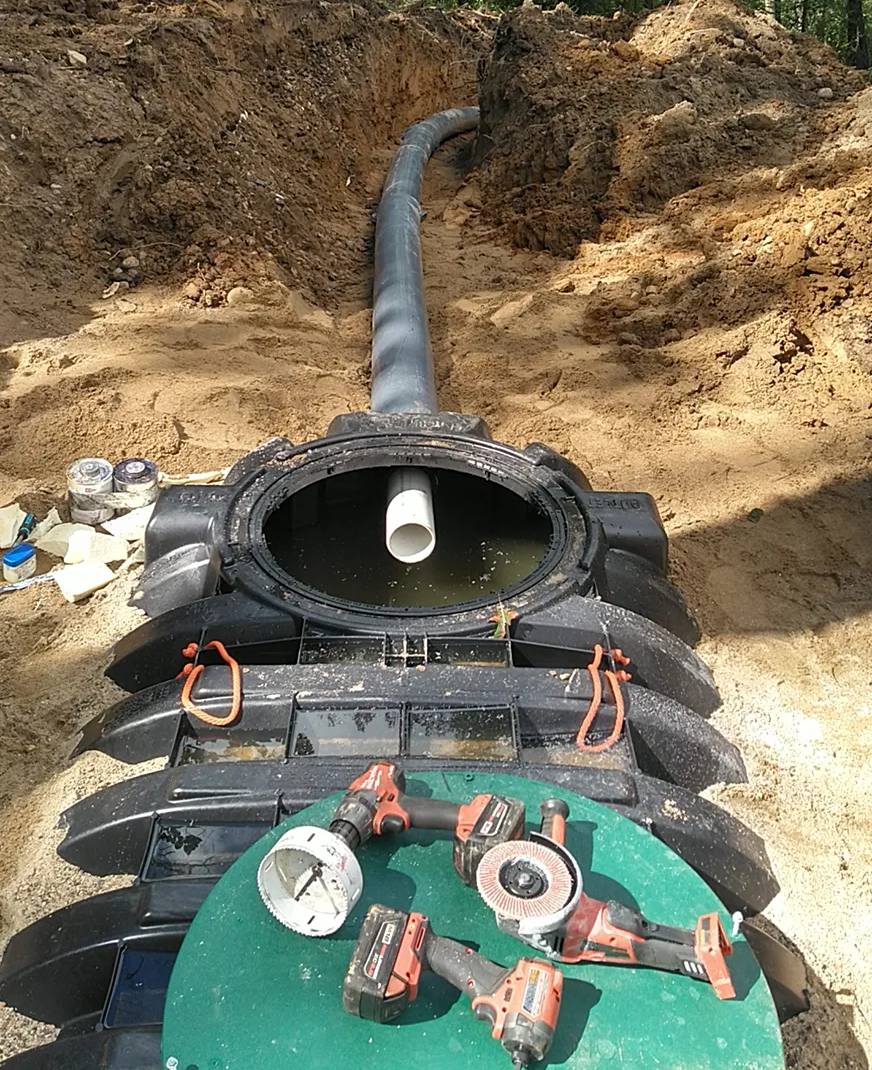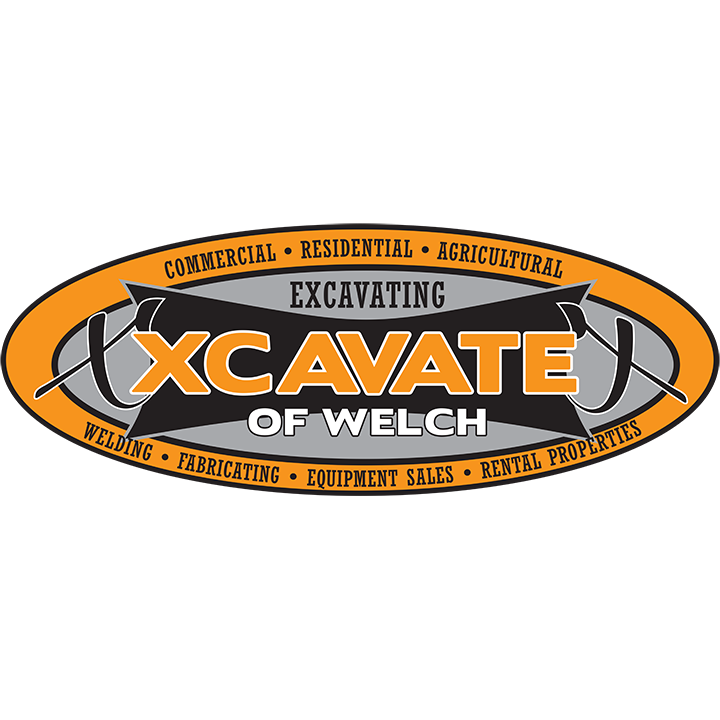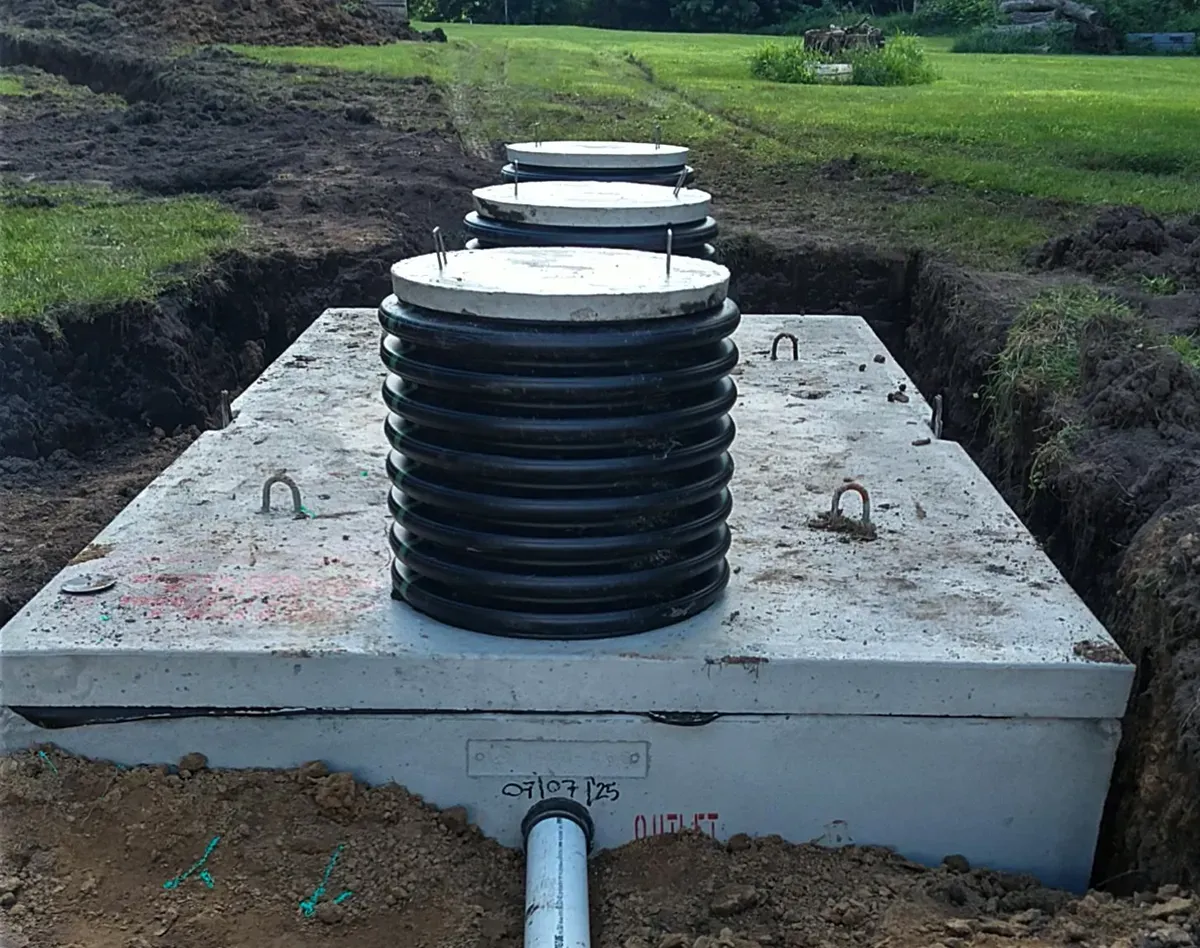Septic System Installation
Xcavate of Welch brings years of specialized experience to septic system installation throughout Southeast Minnesota. As a trusted septic contractor, we understand the critical importance of proper installation techniques and regulatory compliance for every project we undertake.
Our team specializes in installing new septic systems that fully meet current environmental and health regulations. We stay current with all local codes and permitting requirements, ensuring your new system passes inspection and operates efficiently for years to come. From initial site evaluation to final system commissioning, we handle every aspect of the installation process.
Homeowners can rely on Xcavate of Welch for complete septic system solutions, whether replacing a failing system or installing one for new construction. We work with various system types including conventional, alternative, and advanced treatment systems, tailoring our approach to your property's specific soil conditions and household needs. Our commitment to quality workmanship and regulatory compliance gives homeowners peace of mind in their investment.
How do I identify what type of septic system I have?
Check Your Home's Records
Start by looking through the paperwork you received when you bought your home. The home inspection report, seller's disclosure, or closing documents often mention the septic system type. If you have the original installation permits or as-built drawings, these will definitively show what was installed.
Contact Local Authorities
Your county health department or building department likely has records of your septic system on file. When the system was installed, permits were required, and these documents typically specify the system type, size, tank capacity, and drain field location. A simple phone call or office visit can provide this information, usually requiring just your property address.
How often should a septic system be serviced?
Proper septic system maintenance protects your investment, prevents costly repairs, and keeps your household running smoothly. Understanding the right service schedule is essential for every septic system owner.
Pumping Frequency
The most critical maintenance task is having your septic tank pumped regularly. Most homeowners should pump their tank every 3-5 years, though your specific schedule depends on several factors. A household of two people with a 1,000-gallon tank might go five years between pumpings, while a family of six with the same tank size should pump every two years or less.
Your usage habits matter significantly. Homes with garbage disposals, which add solid waste to the tank, need more frequent pumping. Similarly, if you do excessive laundry or have high water usage, solids accumulate faster and require more frequent removal.
Annual Inspections
Even between pumpings, you should have your system inspected annually. During inspections, professionals check the sludge and scum levels in your tank—when these layers occupy more than one-third of the tank's volume, it's time to pump. They'll also examine baffles, check for leaks, and ensure the drain field is functioning properly.
For advanced systems with mechanical components, annual inspections are non-negotiable. Aerobic treatment units, mound systems, and drip irrigation systems have pumps, timers, and other parts that need regular checking to prevent failures.
Keep Records
Maintain a service log documenting all pumpings, inspections, and repairs. This helps you track patterns, stay on schedule, and provides valuable information if problems arise. Good records also add value when selling your home.
What is the longevity of a typical septic system?
A properly maintained septic system typically lasts 20-40 years, though individual components have different lifespans.
Component Lifespans
Concrete septic tanks, the most common type, last 40+ years, with some exceeding 50 years. Steel tanks rust out in 15-20 years, while fiberglass and plastic tanks can last indefinitely. The drain field is usually the limiting factor, lasting 15-25 years before soil clogging causes failure. Mechanical components in advanced systems—pumps, aerators, and electrical parts—need replacement every 5-15 years but are relatively inexpensive fixes.
Maximizing Longevity
Regular pumping every 3-5 years is the single most important maintenance task. Proper usage extends system life: avoid excessive water use, don't flush non-biodegradables, eliminate harsh chemicals, and keep vehicles off the drain field. Quality installation in suitable soil also ensures your system reaches its maximum lifespan.
List of Services
-
Why would a homeowner need septic system replaced?List Item 1
A homeowner may need septic system replacement when their existing system fails due to age (systems typically last 20-40 years), structural damage, or inadequate capacity for household size.
Common signs include persistent sewage backups, standing water or soggy areas in the drain field, foul odors, or slow drains throughout the home. Soil compaction, root intrusion, or improper maintenance can cause premature failure. Local regulations may also require replacement when selling a home or if the system no longer meets current code requirements.
-
What is the first step in replacing a failing septic system?List Item 2
The first step in replacing a failing septic system is to contact your local health department or permitting authority to understand requirements and obtain necessary permits. You'll typically need a site evaluation and assessment of soil conditions to determine what type of system is suitable for your property.
Simultaneously, contact a licensed septic designer. They can assess your current system's failure, recommend appropriate replacement options, and guide you through the permitting process while ensuring compliance with local regulations.

LOCAL EXPERTISE
We understands regional soil conditions, water table challenges, and local county permitting requirements.
Our team navigates county regulations seamlessly, ensuring your installation meets all code standards while avoiding costly delays or compliance issues.
PROFESSIONAL EQUIPMENT
& CREW
With modern excavation equipment and trained installation team, Xcavate of Welch completes projects efficiently and precisely. Our experience in handling diverse site conditions ensures proper system placement, grading, and drain field construction for optimal long-term performance.
COMPREHENSIVE SERVICE
From initial site evaluation through final inspection, Xcavate of Welch manages every installation phase.
They install precisely off of the custom septic system design that your designer has drawn and provide ongoing guidance to ensure your septic system functions reliably for decades.

